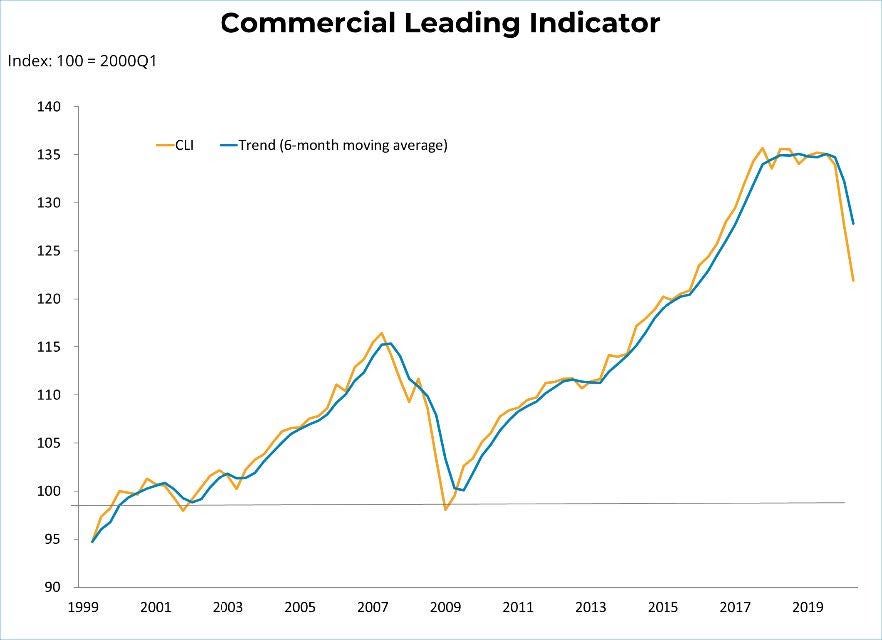 The BCREA Commercial Leading Indicator (CLI) continued to fall in the second quarter of 2020 from 127.6 to 121.9, representing the fourth consecutive quarterly decline. It was the second largest drop in the indicator in over two decades, reflecting the hardest hit months of the pandemic in April and May. Compared to the same time last year, the index was down by 9.8 per cent.
The BCREA Commercial Leading Indicator (CLI) continued to fall in the second quarter of 2020 from 127.6 to 121.9, representing the fourth consecutive quarterly decline. It was the second largest drop in the indicator in over two decades, reflecting the hardest hit months of the pandemic in April and May. Compared to the same time last year, the index was down by 9.8 per cent.The second quarter of 2020 saw the complete shutdown of key economic industries in BC, while employment continued to decline in manufacturing and in key real estate sectors. In contrast, the financial component had the largest positive impact on the CLI on record, as REIT prices rose and risk spreads narrowed from the previous quarter. The underlying trend in the CLI continued its downward trend into the second quarter of 2020. This suggests that going forward, the environment for commercial real estate activity in BC will continue to be weak.

BC’s economy was slowed by the pandemic in the first quarter of 2020, and by the second quarter came to a halt. Manufacturing sales of both durable and nondurable goods fell by magnitudes not seen since the great financial crisis in 2009. The decline in wholesale trade was driven by lower sales in motor vehicles, and to a lesser extent by lower sales in personal and household goods such as clothing and footwear. Meanwhile, April saw the largest monthly drop in retail sales on record, as brick-and-mortar stores were shut down for most of the second quarter. Although online sales reached new highs during this period, they were not enough to offset the decline.
Employment growth in key commercial real estate sectors such as finance, insurance, real estate and leasing was negative for the second consecutive quarter, down by about 1,700 jobs, which is notably fewer than the 13,500 jobs lost in the previous quarter. Manufacturing employment fell for the fourth consecutive quarter by about 5,170 jobs, almost three times the number of jobs lost in the previous quarter.
The CLI’s financial component was positive in the second quarter of 2020 as the market bounced back from the full meltdown in late February that sent equity markets into free fall and government bond yields plummeting.
Source - BCREA
